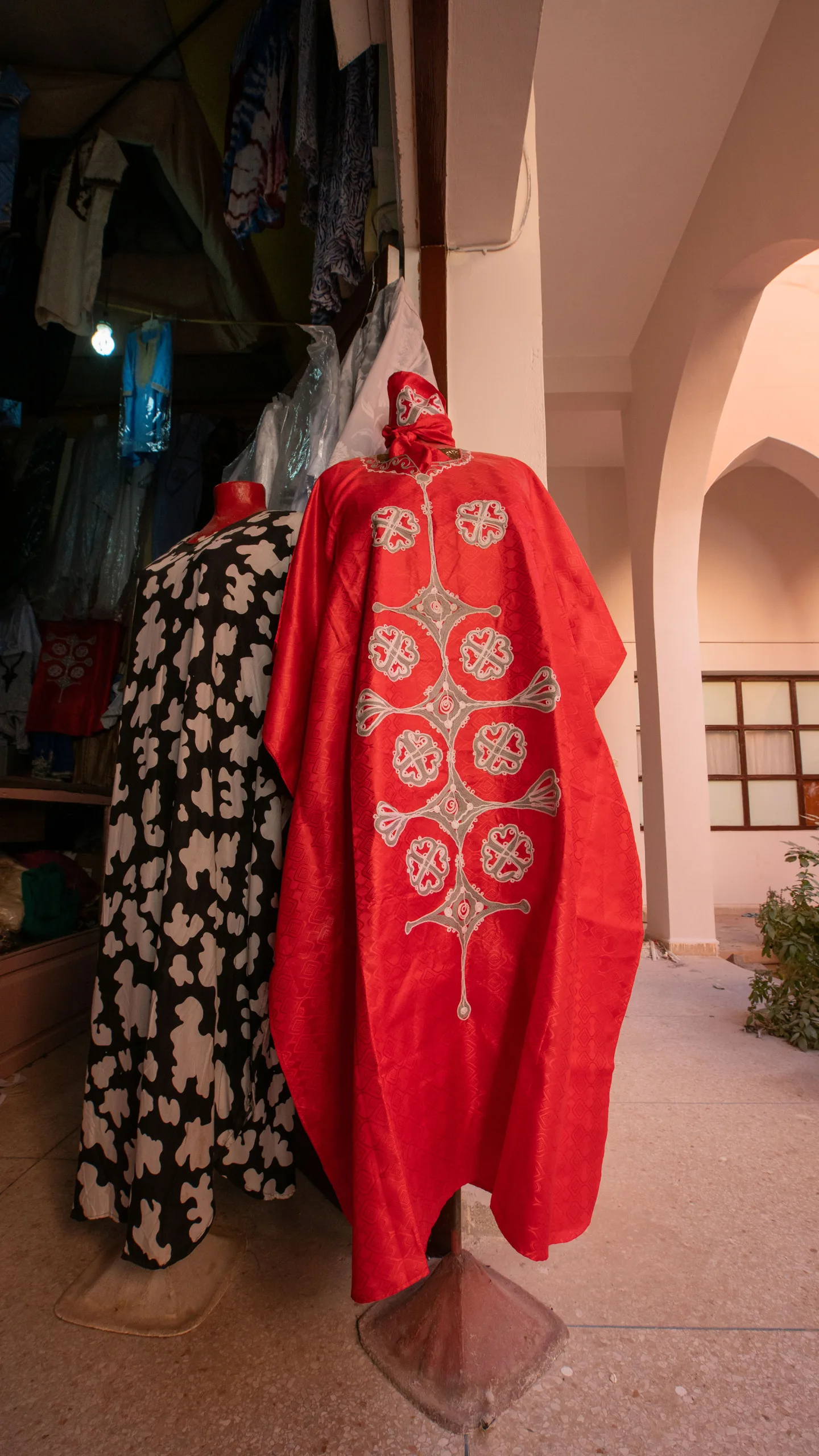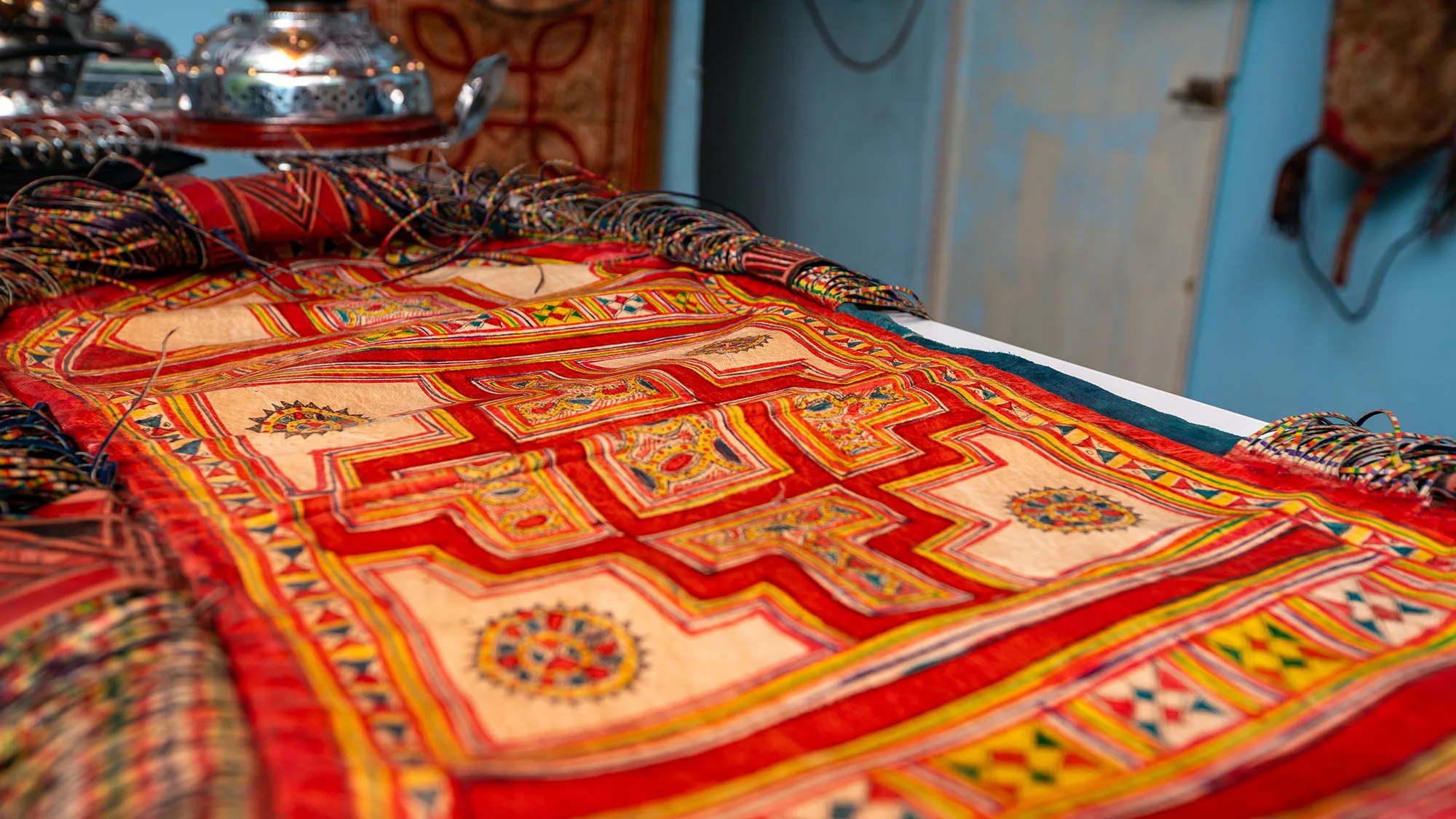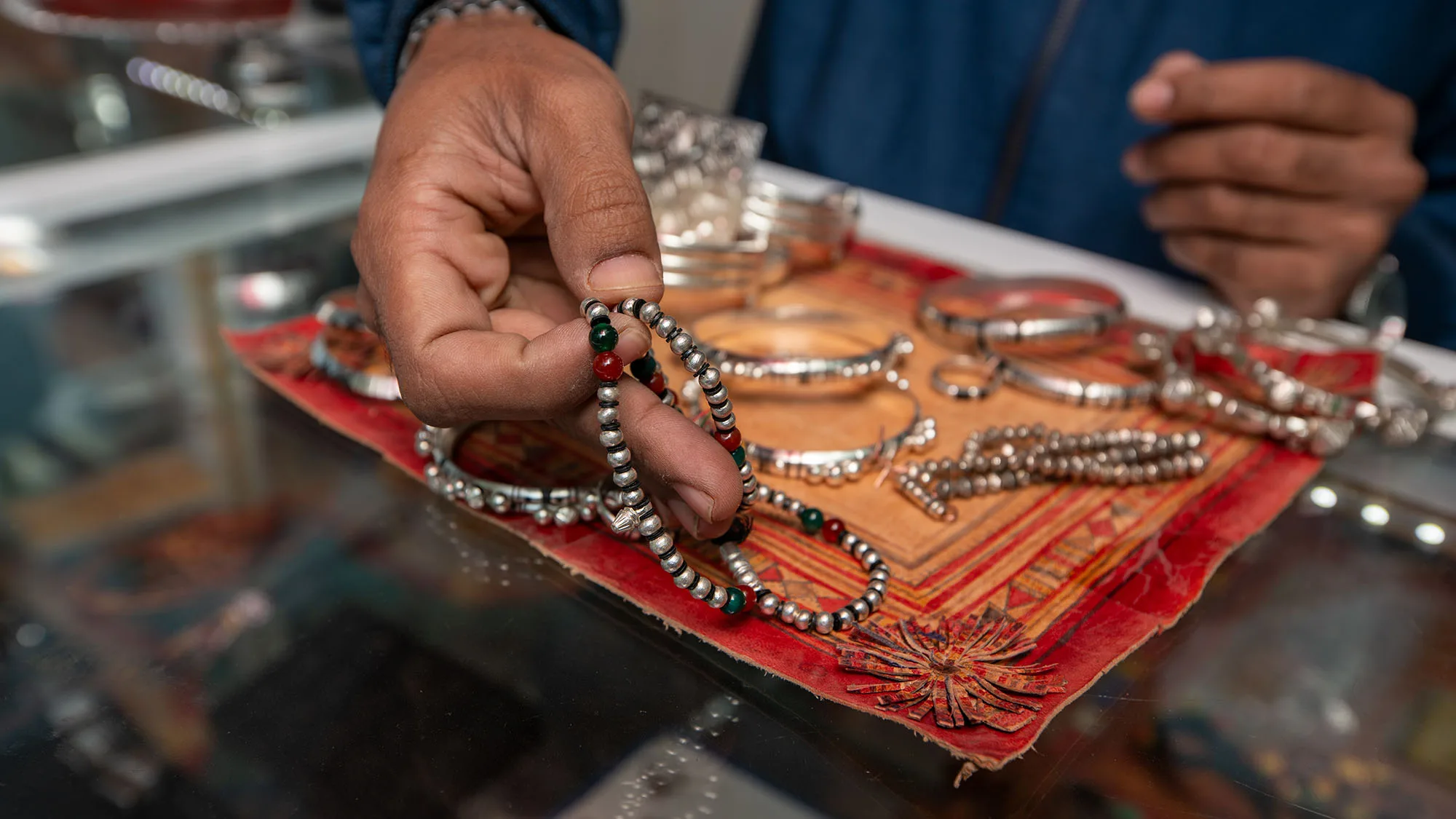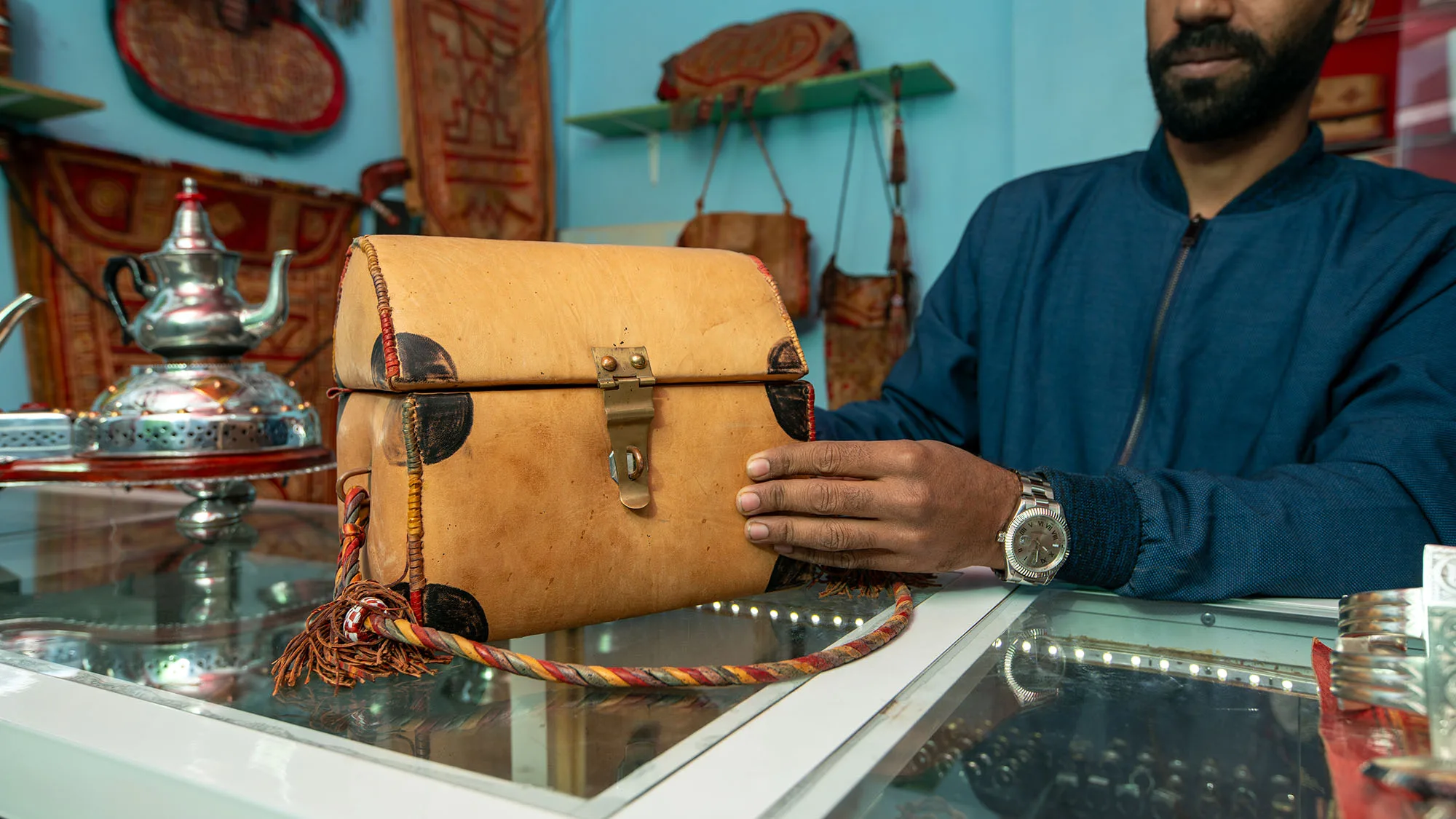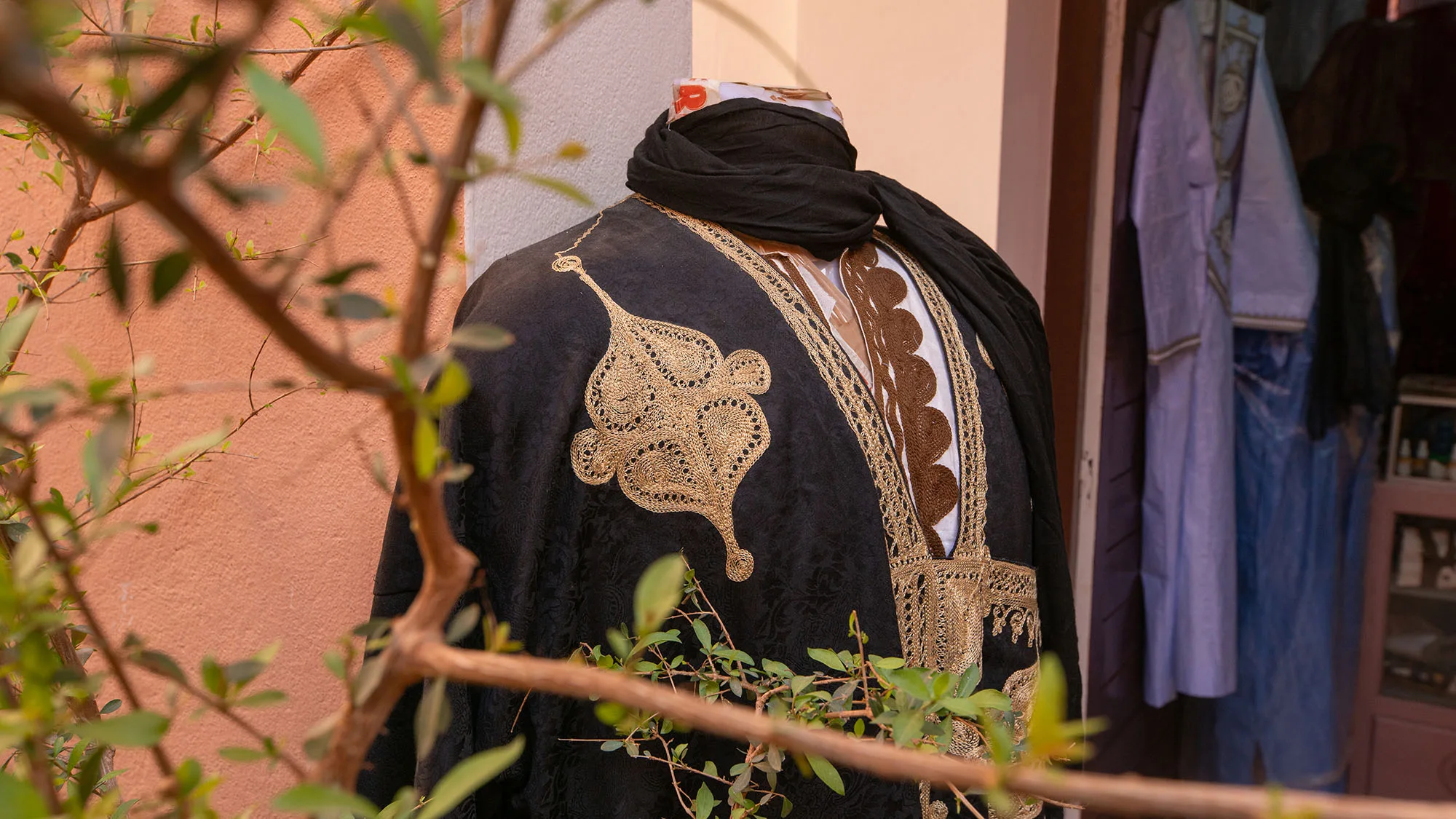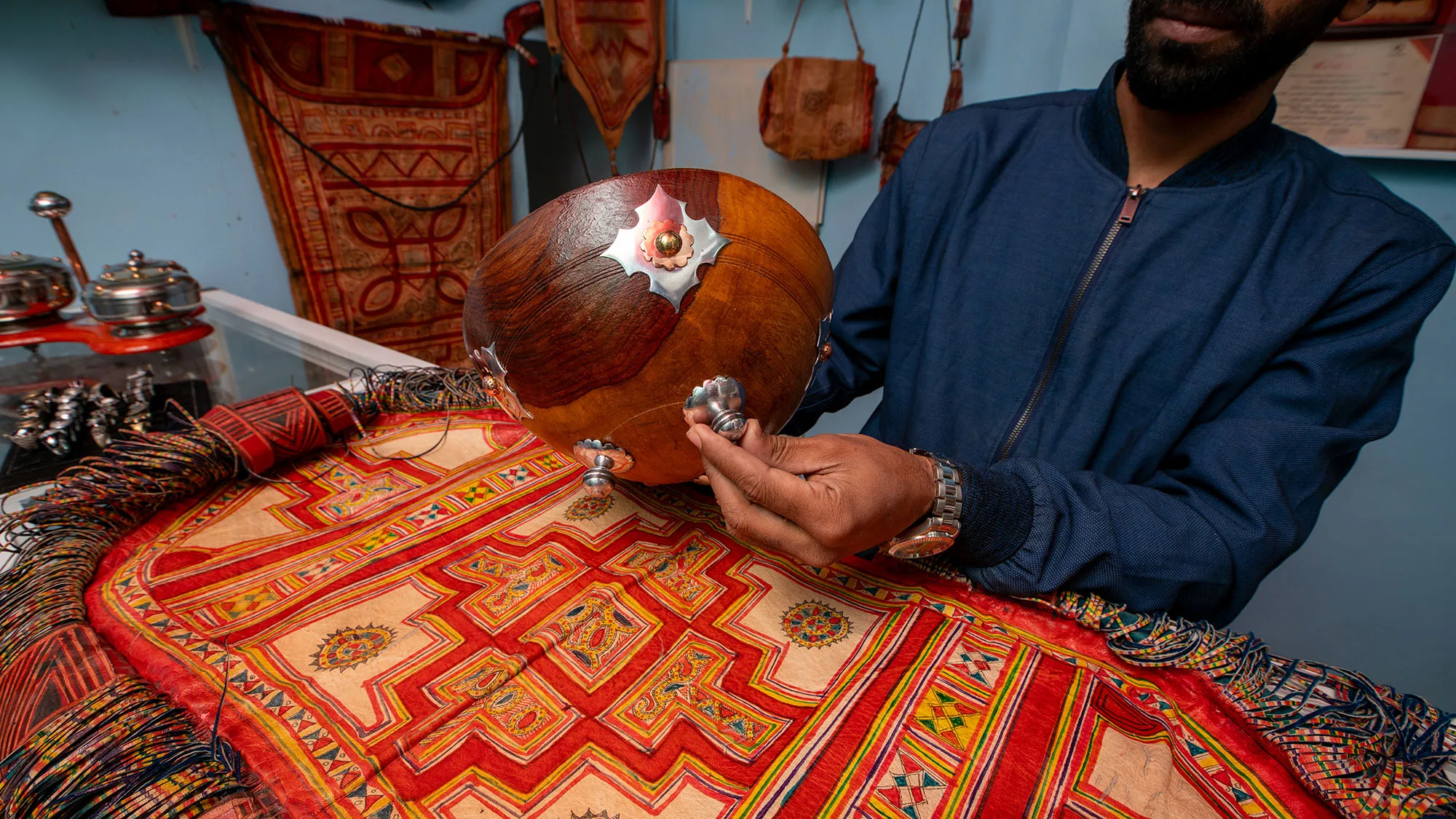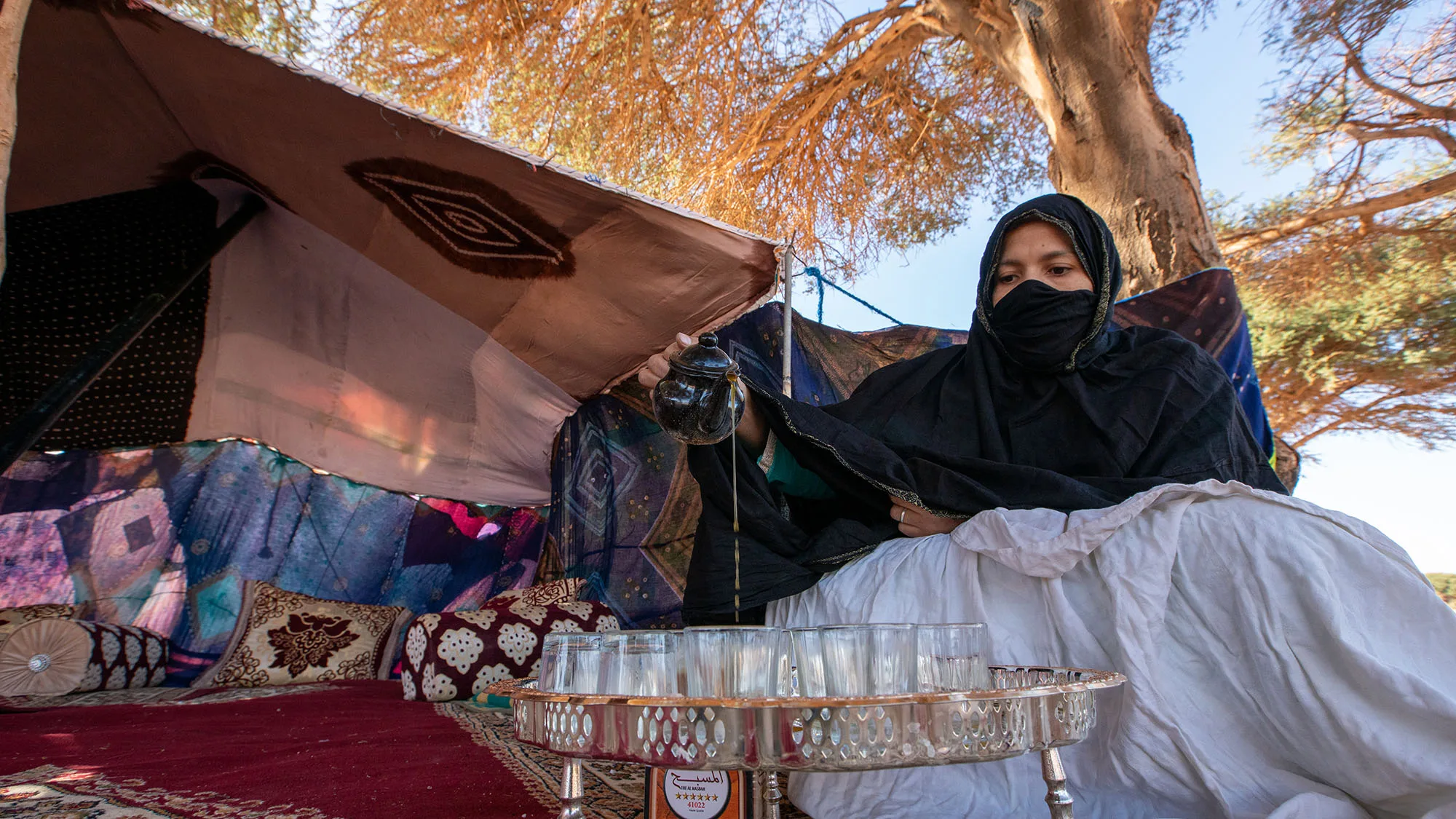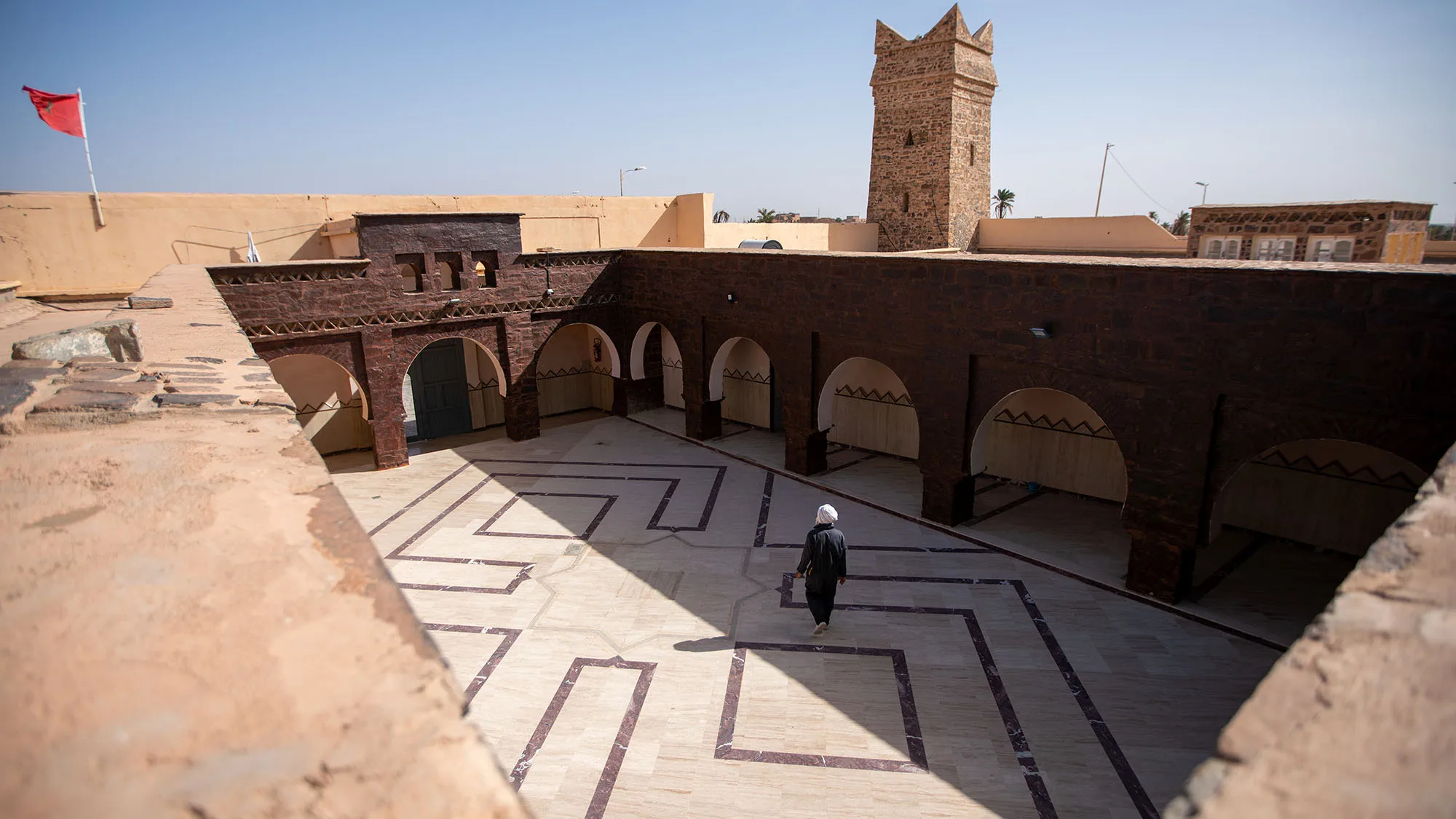
Discover Local Handicrafts
Local handicrafts in Assa-Zag are a living expression of the culture and traditions of this Saharan region. Local artisans, mastering ancestral techniques, create unique objects that reflect the skill and creativity of their communities. By discovering local handicrafts, visitors can not only appreciate the beauty of these works but also support the local economy and help preserve cultural heritage.
The handicrafts in Assa-Zag are diverse and rich in materials and techniques. Jewelry is particularly notable, with artisans working with silver to create exquisite pieces, often adorned with traditional Berber motifs. Bracelets, necklaces, earrings, and rings are crafted with precision and attention to detail, showcasing the talent of local artisans. Silver jewelry is not only a beautiful accessory but also a symbol of status and tradition.
Leatherwork is another important craft in the region. Artisans create leather goods such as poufs, camel saddles, bags, and belts. Goat and camel leather is carefully treated to produce durable and aesthetically pleasing items. Tanning and sewing techniques, passed down through generations, ensure the exceptional quality of these products
Basket weaving is also a prominent part of the handicrafts in Assa-Zag. Using natural materials such as palm fronds, artisans create both functional and decorative items, including baskets, mats, and bags. Each piece is handmade, featuring patterns and designs that reflect local traditions. Visitors can watch weaving demonstrations and learn how these items are intricately crafted with precision and care.
Textiles and traditional clothing are another integral part of local handicrafts. Women in the region produce garments such as gandouras and melhfas using complex weaving and embroidery techniques. Fabrics are often dyed with natural colors and decorated with geometric and floral patterns. Traditional clothing is not only practical but also an expression of the cultural identity of the people of Assa-Zag.
Handcrafted products can be purchased at local souks, cooperatives, and craft shops. The weekly markets are bustling places where artisans sell their creations directly to customers. Visitors can interact with the artisans, learn the stories behind each piece, and buy unique souvenirs that tell the story of the region.
By supporting local handicrafts, visitors contribute to the sustainable economic development of the region. Artisan cooperatives, often led by women, play a crucial role in the economic and social empowerment of local communities. The income generated from the sale of handicrafts helps improve the living conditions of artisans and preserves cultural traditions for future generations.
In summary, local handicrafts in Assa-Zag showcase the region’s culture and traditions. Visitors can discover unique, carefully crafted items and support the local economy by purchasing handmade products. It is a rewarding experience that connects visitors with the history and identity of Assa-Zag
Discover

